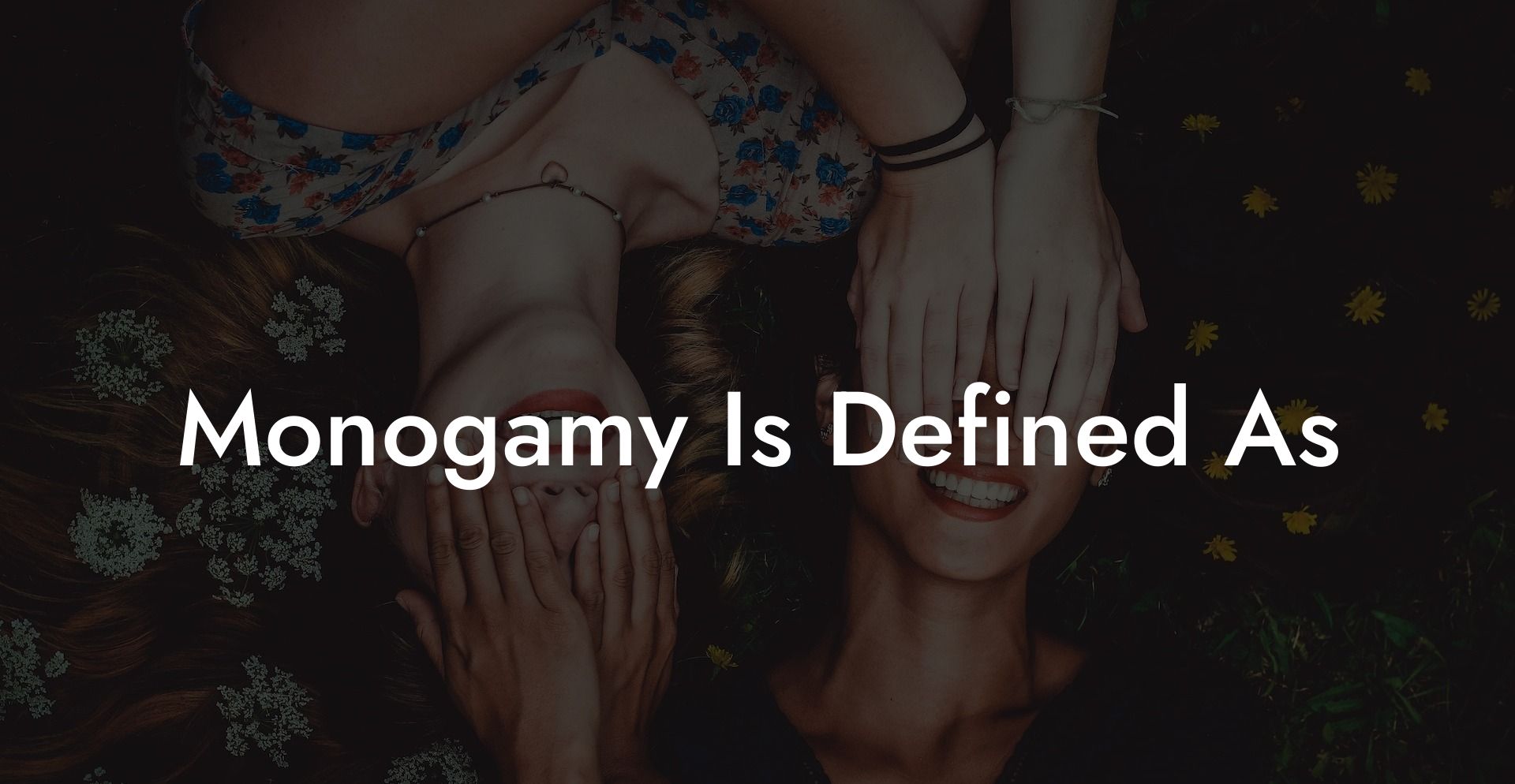Monogamy has been widely considered the norm in contemporary western culture. But as society progresses, it's important to re-evaluate the very definition of monogamy and its implications in all its forms. In this article, we dive into what monogamy is, its history, types, and role in today's relationships. Join us as we explore this fascinating topic that continues to shape many people's understanding of love, commitment, and partnership.
Monogamy Is Defined As Table of Contents
Defining Monogamy
Monogamy is often defined as the practice of having a single romantic and/or sexual partner at any given time. This type of relationship structure has dominated many societies throughout history, becoming the standard through cultural and religious influence. Despite the widespread assumption that monogamy is "natural" or "normal," people continue to question its relevance in a rapidly changing society with diverse relationship models and preferences.
Historical Context
To fully understand monogamy, we must examine its place throughout history. Early human societies primarily practiced polygyny, where a man could have several wives. However, with time, marriage became more focused on property ownership, stability, and societal expectations. Thus, monogamy emerged as an institution designed to maintain order, guarantee inheritance, and support both religious and customary traditions.
Types of Monogamy
In discussing monogamy, it’s important to identify its different types, which include:
- Social Monogamy: This occurs when two people maintain a social partnership, sharing resources and responsibilities, but may engage in intimate relationships with others.
- Sexual Monogamy: In this form, partners are exclusive in their sexual activities, but may maintain additional emotional connections apart from their primary relationship.
- Emotional Monogamy: This type centers on the emotional exclusivity of partners while potentially engaging in physical intimacy with others.
- Closed Monogamy: Also referred to as "strict" monogamy, this implies that partners in a relationship do not allow any space for emotional or physical connections with others.
Monogamy in Today's Relationships
Modern relationships often encompass a wide range of intimacy levels, connectivity, and expectations. As such, one size certainly does not fit all. For some, monogamy provides stability, commitment, and a genuine appreciation of their chosen partnership. For others, defining themselves within a monogamous structure may feel limiting, oppressive, or inauthentic. Recognizing this, it’s crucial to engage in open and honest communication about the type of monogamy (if any) that best suits individual relationships and preferences.
Monogamy Is Defined As Example:
Jane and John have been together for several years and have always maintained a monogamous relationship. However, they have found that while they're emotionally committed, they're both interested in sexual exploration with other partners. After open, honest discussions, they decide to pursue a form of sexual non-monogamy while maintaining their emotional monogamy and primary relationship. This arrangement allows them to explore their desires freely while remaining emotionally exclusive to each other's needs.
As seen in this exploration of monogamy, it’s crucial to understand that individual preferences, desires, and boundaries vary significantly. It's vital to destigmatize alternative relationship structures and promote open communication and understanding among all partners. If you found this guide helpful, please consider sharing it with others who may benefit from its insights. Also, feel free to explore other guides on The Monogamy Experiment, as we continue to provide informative, engaging content on several relationship dynamics.













